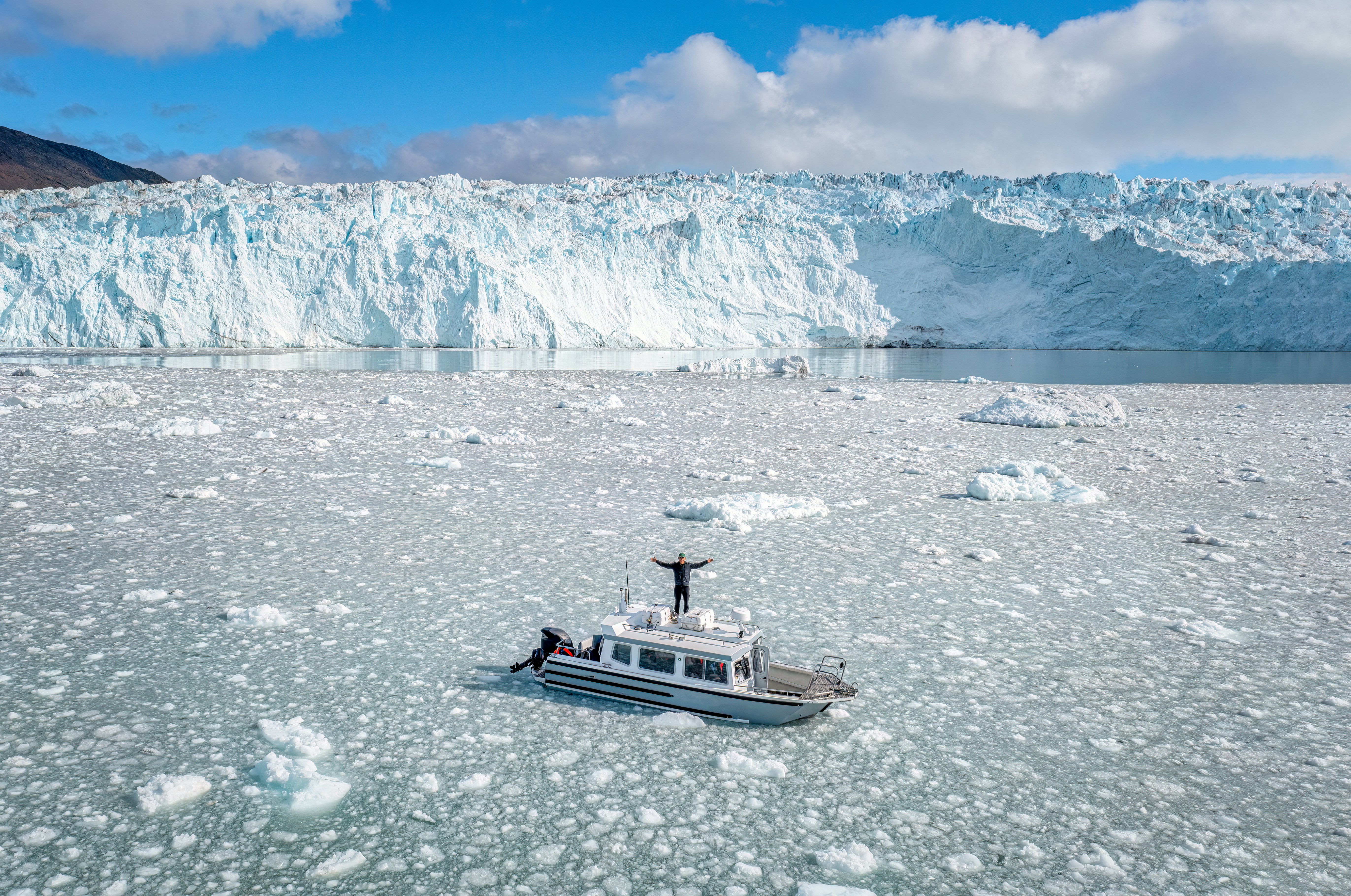
It’s hard to escape the reality that the world is not doing well in responding to climate change.
According to the most recent United Nations' Intergovernmental Panel on Climate Change report, global surface temperatures will all but inevitably soar past the 1.5 degrees Celsius mark set as a target limit by the Paris Accords, and possibly breach the 2 degrees Celsius mark by the middle of the century. That could lead to all kinds of problems, such as lower crop yields, more wildfires, stronger storms, and more people dying of heat-related issues in the summer.
And that’s just the scenario as extrapolated in a more or less linear fashion from current trends in temperature and carbon dioxide emission levels. As described in a new paper published Friday in the journal One Earth, climate change could get a lot weirder due to feedback loops that amplify warming and that scientists can’t fully model.
“Climate models may be underestimating the acceleration in global temperature change because they aren’t fully considering this large and related set of amplifying feedback loops,” Oregon State University postdoctoral researcher and study co-author Christopher Wolf said in a statement.
In their paper, Wolf and his co-author, Oregon State University professor of ecology William Ripple, led an international team in examining 47 different types of feedback loops that could affect future climate change, some of which increase warming, and some of which create a cooling effect, and some of which have uncertain effects.
The overall result of these interacting loops is too hard to predict at this point, but Wolf and Ripple worry that warming feedback loops could push the Earth's climate past one or more tipping points that could “result in tragic climate change outside the control of humans,” they write.

What’s a climate feedback loop?
Ripple and Wolf studied and created a table of 41 climate feedback loops, geophysical and biological processes that are driven by climate and which, in turn, drive climate change in one way or another.
An example of a physical feedback loop might be Arctic sea ice, where ”warming in the Arctic leads to melting sea ice, which leads to further warming because water has lower albedo (reflectance) than ice,” Ripple and Wolf write in the paper. The pair consider permafrost thawing, which releases carbon dioxide and methane, as a biological feedback loop.
Some of the major positive feedback loops (positive here meaning something that amplifies, not something that has a positive outcome) they examined, loops that increase global warming, are the aforementioned loss of Arctic sea ice, the loss of glaciers, increasing water vapor in the atmosphere —which has a greenhouse effect itself — and sea level rise, which further lowers Earth's albedo. They found 27 positive feedback loops in total.
There are some negative feedback loops (meaning things that promote stability), primarily the Planck loop, where the more infrared energy escapes Earth into space the warmer the climate becomes. Chemical weathering of rocks occurs when atmospheric carbon dioxide mixes with rainwater, acidifying it and removing atmospheric carbon, and this increases with carbon dioxide levels. Increasing rainfall in places like the Sahara desert, and increasing carbon dioxide levels worldwide, can lead to more plant growth, which in turn sequesters carbon dioxide. They found seven of these negative feedback loops that act to balance climate change.
Other feedback loops are more uncertain in Ripple and Wolfs’ analysis such as how much the ocean can absorb carbon dioxide by acidifying, or the effects of human-created aerosols and mineral dust in the atmosphere. Some other studies suggest aerosols and dust cool the climate, but predicting future dust levels is difficult and humans are reducing levels of industrial aerosols in the air, otherwise known as pollution, because they are unhealthy for us. The researchers found seven of these uncertain feedback loops.

What does it mean?
Nearly all the countries on Earth signed on to the Paris Accord agreement, adopted in 2015, which aims to limit global warming by 1.5 to 2 degrees Celsius as compared with pre-industrial global temperatures. But countries “are not even close to being on track” to meet the necessary emission reduction guidelines set forth in the agreement, Ripple and Wolf write in their paper. If you think of how much carbon dioxide can be emitted before reaching 1.5 degrees Celsius of warming as a budget, the “carbon budget” at the start of 2023 is about 260 gigatons of carbon dioxide, an amount they say the world could blow through in less than seven years at current rates.
But that’s just the projection without considering how feedback loops could complicate things. Because the feedback loops are driven by changes in temperature and carbon levels, and because they interact with one another, they could create “climate cascades,” according to Ripple and Wolf, waves of climate change more powerful than any one loop could produce on its own.
That could increase the likelihood and speed and which the global climate reaches tipping points beyond which new climate patterns become self-sustaining. At that point, a much warmer planet would be with us for centuries or longer.
Where do we go from here?
For Ripple and Wolf, the continued uncertainness around some of the feedback loops they examined, and the broader uncertainty of how these loops could affect the course of climate change going forward, lead to two different conclusions.
First, scientists need to get much better at measuring and modeling all of the Earth systems involved in climate change, an effort that will require major changes of approach within the scientific community, according to Ripple.
“We need a rapid transition toward integrated Earth system science because the climate can only be fully understood by considering the functioning and state of all Earth systems together,” he said in a statement. “This will require large-scale collaboration, and the result would provide better information for policymakers.”
Second, the work needs to get serious about the wide-ranging shifts in land management, agriculture, energy, and transportation necessary to reduce emissions to slow the pace of climate change, particularly since feedback loops could present us with unpleasant surprises.
“It’s too late to fully prevent the pain of climate change, but if we take meaningful steps soon while prioritizing human basic needs and social justice, it could still be possible to limit the harm,” said in a statement.







